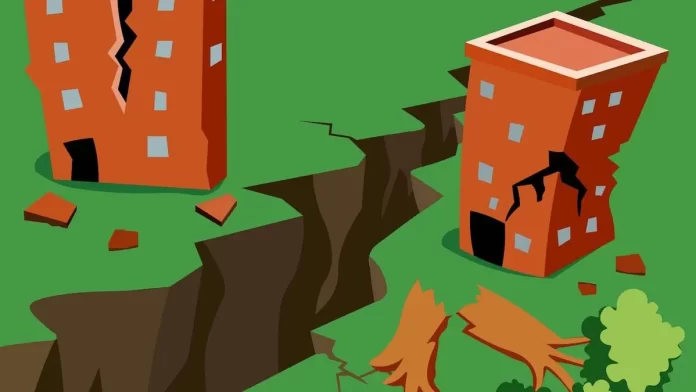Earthquakes are one of the most unpredictable natural disasters that may cause large-scale damage to life and property. Competitive exams often ask questions pertaining to earthquakes especially the types of earthquake waves and their distinguishing features.
As there are minute differences in their nomenclature, students often get confused. Therefore, this post is an attempt to define different types of earthquake waves with their characteristics in simpler terms. Read this to learn more.
Types of Earthquake Waves
The two main types of seismic or earthquake waves are body waves and surface waves. While body waves are subcategorized into primary and secondary waves, the surface waves are sub-divided into love and rayleigh waves.
Body Waves
Body waves are generated due to the release of enormous energy at the focus of the earthquake deep inside the earth.
Unlike surface waves that can only move on the surface like ripples of water, body waves move in all directions with differing velocities.
The velocity of body waves is directly proportional to the density of the material. The higher the density, the higher the velocity.
Body waves are of two types namely Primary waves (P-Waves) and Secondary waves (S-waves).
P-Waves or Primary Waves
Also called the longitudinal or compressional waves, Primary waves are the fastest of all waves.
As they are body waves, they can move in both solid and liquid particles. However, It is faster in solid materials than in liquid materials.
Further, like sound waves, they push and pull the objects they move through.
A primary wave under certain circumstances can change into a secondary wave on refraction or vice versa.
S-Waves or Secondary Waves
Also called transverse or distortional waves, secondary waves are analogous to water ripples or light waves, wherein the particles move at right angles to the rays.
In other words, S-waves move rock particles up and down perpendicular to the direction of wave propagation.
One distinguishing feature of secondary waves is that they can only travel through solids. In other words, secondary waves cannot pass through liquid materials. Hence, they do not pass through the earth’s core which is largely fluid.
These high frequencies and short-wavelength waves can propagate in all directions from the focus and they can also travel at varying velocities proportional to the density of the object they travel through.
Surface Waves
Surface waves get generated when body waves interact with the surface rocks.
Also known as long-period waves, surface waves generally affect only the surface of the Earth.
However, surface waves are the most destructive of all earthquake waves. They are characterized by low frequency, long wavelength, and transverse vibration which develop in the immediate neighborhood of the epicenter.
As they cover the longest distance of all the seismic waves, surface waves get recoded at the seismograph after all other seismic waves.
Surface waves are of two types namely love waves and rayleigh waves. While the former travels in a zig-zag movement, the latter travels in an elliptical movement.
Read more| Types of Soil in India: Classifications and Characteristics
